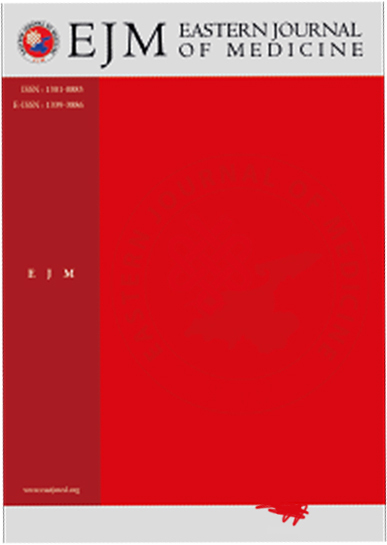Diffusion-weighted MRI in the diagnosis of intracranial hematomas
Davut Şanlı1, Özkan Ünal2, Aydın Bora1, Mehmet Beyazal1, Alpaslan Yavuz1, Serhat Avcu112
To determinate the diagnostic value of diffusion-weighted MR imaging (DWI) in intracerebral hematomas, epidural hematomas, subdural hematomas, and subarachnoid hemorrhage, and to assess the contribution of diffusion signal characteristics in the differentiation of hematoma stages. In this prospective study, consecutive 67 patients (range: 3-89 years), 35 (18 men 17 women) with intracerebral hematoma, 18 (10 men 8 women) with subdural hematoma, 2 (1 man 1 woman) with epidural hematoma, and 12 (5 men 7 women) with subarachnoid hemorrhage on conventional MRI sequences constituted the case group and were evaluated with DWI. Intracerebral, subdural and epidural hematomas detected on conventional MR sequences were also shown on DWI. But none of the cases with subarachnoid hemorrhage was demonstrated on DWI. All intracranial hematomas detected on DWI except from chronic stage subdural hematomas showed similar signal intensity characteristics on DWI and T2WI, but were hypointense on ADC maps. All intracerebral, subdural and epidural hematomas seen on conventional MR sequences could be detected by DWI. On the contrary, DWI was not an effective imaging method for detecting subarachnoid hemorrhages. Using DWI alone for detecting the stages of hemorrhages can provide only additional information in subdural and intracerebral hematomas, and it is unable to give definite results, and the lesions should be evaluated by the correlation with other conventional MRI sequences.
Keywords: Diffusion weighted magnetic resonance imaging, intracranial hematomasManuscript Language: English














